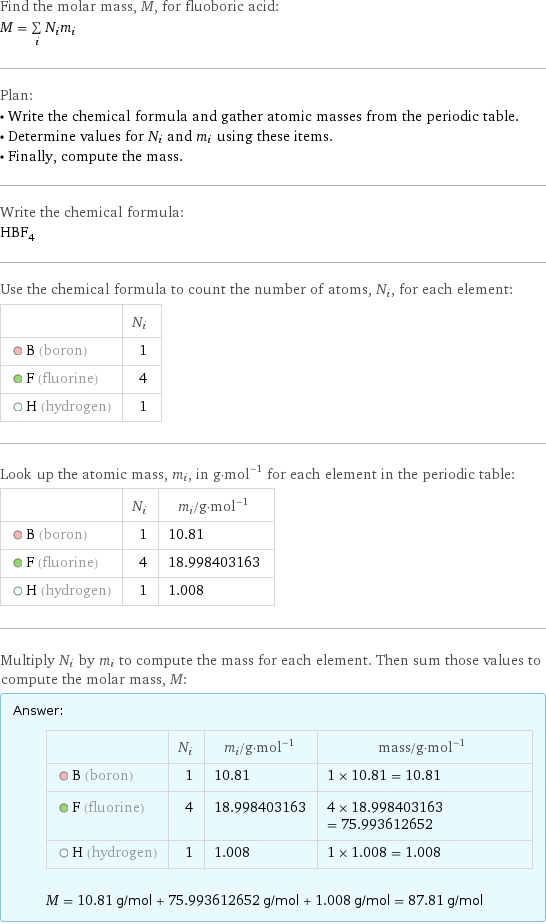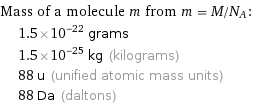Input interpretation

fluoboric acid | molar mass
Result

Find the molar mass, M, for fluoboric acid: M = sum _iN_im_i Plan: • Write the chemical formula and gather atomic masses from the periodic table. • Determine values for N_i and m_i using these items. • Finally, compute the mass. Write the chemical formula: HBF_4 Use the chemical formula to count the number of atoms, N_i, for each element: | N_i B (boron) | 1 F (fluorine) | 4 H (hydrogen) | 1 Look up the atomic mass, m_i, in g·mol^(-1) for each element in the periodic table: | N_i | m_i/g·mol^(-1) B (boron) | 1 | 10.81 F (fluorine) | 4 | 18.998403163 H (hydrogen) | 1 | 1.008 Multiply N_i by m_i to compute the mass for each element. Then sum those values to compute the molar mass, M: Answer: | | | N_i | m_i/g·mol^(-1) | mass/g·mol^(-1) B (boron) | 1 | 10.81 | 1 × 10.81 = 10.81 F (fluorine) | 4 | 18.998403163 | 4 × 18.998403163 = 75.993612652 H (hydrogen) | 1 | 1.008 | 1 × 1.008 = 1.008 M = 10.81 g/mol + 75.993612652 g/mol + 1.008 g/mol = 87.81 g/mol
Unit conversion

0.08781 kg/mol (kilograms per mole)
Comparisons

≈ ( 0.12 ≈ 1/8 ) × molar mass of fullerene ( ≈ 721 g/mol )

≈ 0.45 × molar mass of caffeine ( ≈ 194 g/mol )

≈ 1.5 × molar mass of sodium chloride ( ≈ 58 g/mol )
Corresponding quantities

Mass of a molecule m from m = M/N_A: | 1.5×10^-22 grams | 1.5×10^-25 kg (kilograms) | 88 u (unified atomic mass units) | 88 Da (daltons)

Relative molecular mass M_r from M_r = M_u/M: | 88